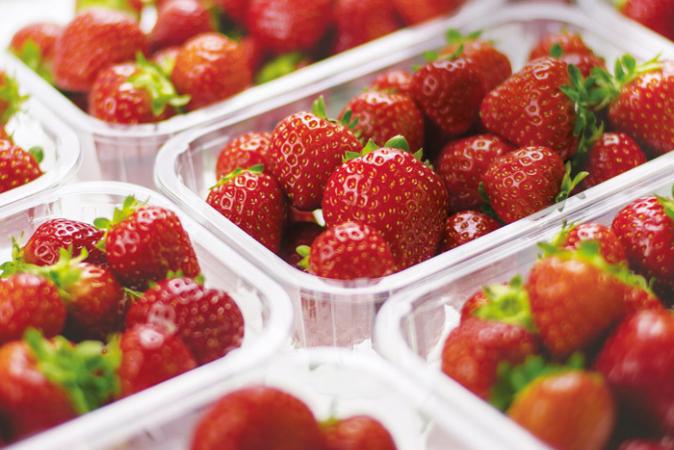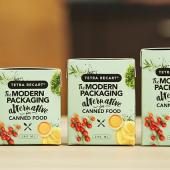The vote on the PPWR seen from the inside
For the world of food and, in particular, of fruit and vegetables, the vote on the Packaging Regulation has a considerable impact, especially in relation to exports and food waste, little considered in the green-inspired institutional debate which has been inflaming the packaging sector for months.
M. Costanza Candi

To understand the nuances of a “radical ecologism” that does not take into consideration all the complex components involved, ItaliaImballaggio has met Simona Caselli, who hold two institutional roles in strategic sectors such as fruit and vegetables and dairy foods. In the dual role of President of Granlatte (the agricultural cooperative controlled by the Granarolo S.p.A holding company) and of Areflh (the association that brings together the European regions and stakeholders of the fruit and vegetable sector), she offers us an international viewpoint – and one from inside the European Institutions - regarding two strategic sectors for F&B.
«AREFLH is an association that includes agricultural producers and Regions, that is, the entities that govern waste management » Caselli begins. « Ours is therefore a mediated position, in which the need for shared regulation at European level is a priority, albeit with fundamental distinctions. We have, for example, pointed out that a number of aspects of the new Regulation are to all intents and purposes unmanageable for the fruit and vegetable sector. I can mention peaches, for example, which are not transportable with adequate guarantees of conservation without the currently used packaging, or pears, a very delicate fruit that requires particular precautions for transport in order to preserve its qualities. To overcome constraints related to product characteristics, the sector works hard on innovating packaging materials – including plastic, paper, cardboard and bio-compostable plastics – an area regarding which there are, however, different views as a result of the different approach that each country has to the same concept. With reference to the research on materials, however, I can only note an extraordinary dynamism, as in the case of the Italian patent of SSICA, which has developed a “bio-can” for peeled tomatoes, coated on the inside with a waterproofing derived from the external film of the tomatoes themselves. It’s an example of circularity, innovation and Made in Italy creativity, an expression of the need to transform waste into a resource: this is a key issue for fruit and vegetables, always looking for solutions to make containers efficient for export, but also sustainable».

Sustainability regardless of preservation, health and food waste
The concept of compostability, in this sense, is an emblematic example, as it has brought to light significant differences in the approach of Member States, taking on different meanings on the basis of applications. In north Europe, in fact, home composters are very popular, while in the south compostability is mainly an industrial process intended to manage materials and objects that are impossible to process at home. This issue, apparently not central, has risked having a strong impact on productive sectors like floriculture, in which vases, essential for both irrigation and transport, have been treated as disposable plastic packaging.
«The risk, - Caselli continues - is, therefore, that of having flowers without a vase or in bio-compostable containers that decompose, making both transport and storage effectively impossible».
These two examples, besides offering an insight into the variety of sectors affected and the complexity of the PPWR, illustrate what Caselli is talking about when she refers to fundamental distinctions. In this regard, especially considering her European role in Areflh, she has tried to steer the debate in the right direction, meeting the Directorate-General for the Environment a few weeks after the presentation of the measure, in order to highlight specific technical problems in the fruit and vegetable sector and the agri-food sector in general, actively engaged during the process of defining the measure in Parliament and in the EU Council.
«Improbable positions have also been seen on single-portions of butter and honey; they are two products, in fact, which, for reasons of hygiene and preservation in the case of hotels and restaurants, must necessarily be served in single-portions » Caselli affirms. «This is despite Conapi’s strong commitment to the production of wax paper packaging, which has been readmitted by the EU Parliament after having been erroneously included with traditional packaging. Another paradox of the regulation’s so-called green stance is the equating of oil with beverages, with all the relative associated packaging limitations, about which Areflh has raised necessary objections, bringing the situation back to the right perspective».
Simona Caselli’s words, who sees the situation inside a specific sector heavily dependent on the most important characteristics of packaging - protection of shelf-life, reduction of waste, consumer safety - make it clear how supposed environmentalism can fail to take into consideration the overall sustainability of a measure which, as the United Nations have stated, demands attention towards the environment, the economy and society in equal measure.
The risks, between parliamentary orientation and national pressures
«Looking at the next steps - continues Caselli - the risk of distorting the orientation of the European Parliament which, with its vote, corrected a strong imbalance regarding reuse in some countries, including Germany, and the position of the pre-existing legislation of France and Spain, which had introduced prohibitions on packaging for fruit and vegetables under 1.5 kg, is to be avoided. Although characterised by very high export volumes, the Spanish fruit and vegetable sector in this context is paying the price for the divisions between the productive world and the positions of the Government. With the Royal Decree of 2021, in fact, the executive legislated with an accelerated process, promulgating a law that has created serious consequences for one of its most productive and dynamic sectors, with serious repercussions on performance, occupation and export capacity, aspects dear, moreover, to the European Union. The effects of the Spanish law have been suspended further to the request of the European Commission, awaiting the outcome of the process for the new European PPWR regulation». She continues: «This is in contrast to the case of France, which legislated in 2020, for which the French in the meantime have been able to reorganise, remaining, however, rather distant from the discussions on this dossier. France is, moreover, a country that exports less than Spain and Italy, producing mainly for the domestic market».
A look at the current situation is inevitable, given that on 18 December a session was held to review what was defined in parliament. On this point, Simona Caselli tells us:
«After the vote of the Environmental Ministers within the EU Council on 18 December, which brought the discussion back towards the text proposed by the Commission and ignored the improvements made by the European Parliament, we have returned to a situation of great uncertainty regarding the final text of the legislation, given that the Trilogues will consider two very different texts and it will not be easy to find a mediation. Personally, I’m rather pessimistic, having been struck by the unwillingness of the Council of Member States to listen to the diplomatic and concrete observations of the fruit and vegetable sector, especially concerned about seeing a significant increase in food waste. This is an inevitable consequence, given the impossibility of using adequate packaging, and having to face an unmanageable fragmentation of the internal market due to the “flexibility” granted to member states. This aspect, referred to several times by the text of the EU Council, implies that every State can define different lists of products exempted from the prohibitions of the new regulation. This situation is irreconcilable with the basic principles of the Community legislative process regarding the internal market, all aimed at the need to avoid fragmentation and instead guarantee homogeneous regulations for economic operators of the European Union. I hope that in view of the Trilogues, we can reflect very carefully on a situation which, on the basis of the national exemptions granted by the Council text, would effectively make life impossible for exporters».

Yoghurts like soft drinks?
Finally, specific reference needs to be made to the dairy sector, which is certainly not excluded from the complexity of the packaging question, given its strategic dimension and the importance of preservation of the product, shelf-life, health and safety for the sector.
«If we look at the dairy sector - Caselli concludes - the Packaging Regulation impacts most of all single-portions, such as the case of butter for the Horeca sector and yoghurts to drink, put in the same boat with soft drinks and therefore subject to really incomprehensible restrictions and rules considering the nature of the product. Again, in this case, Parliament had made important corrections and there is the risk of going back to square one after the Council’s vote».

















